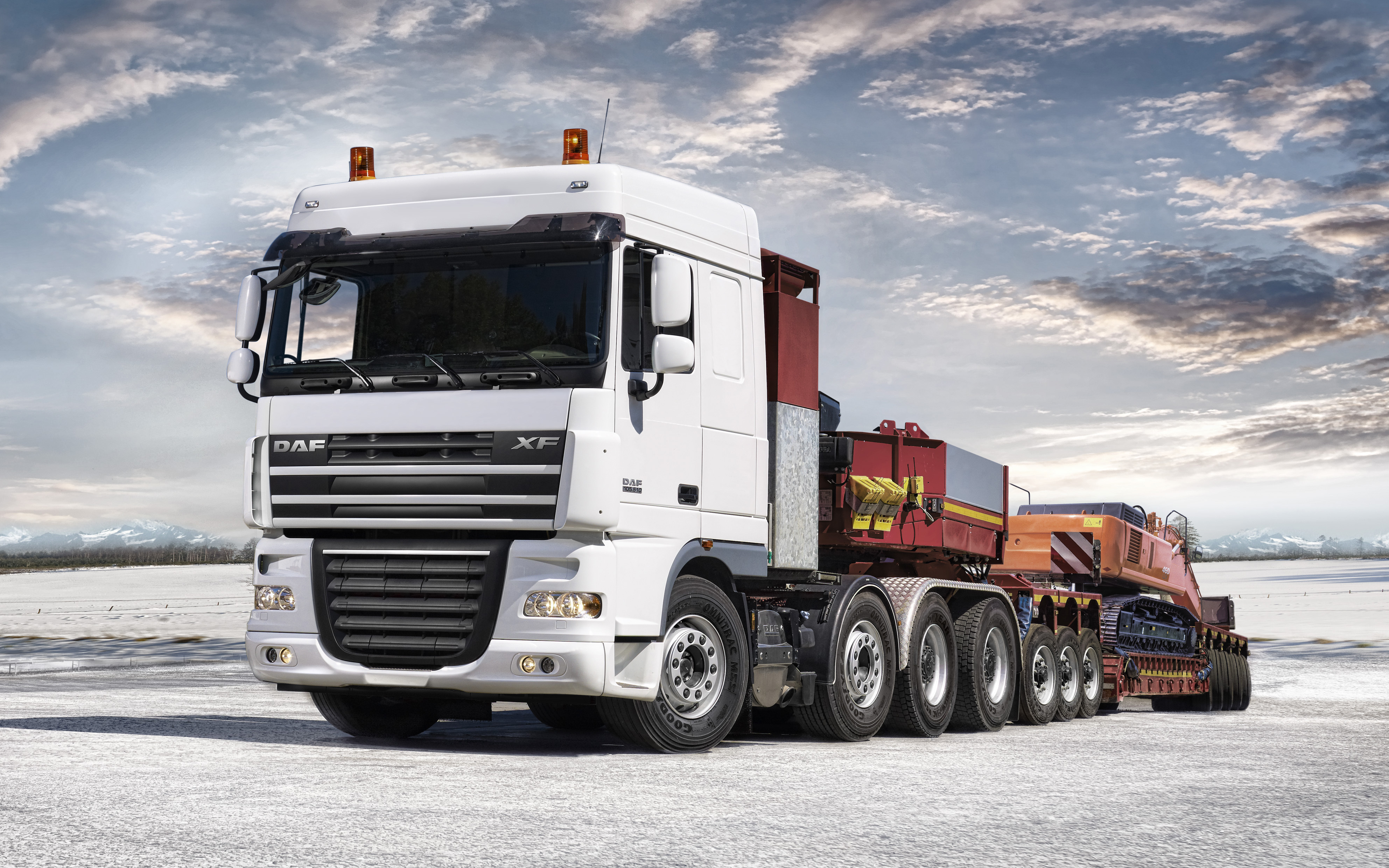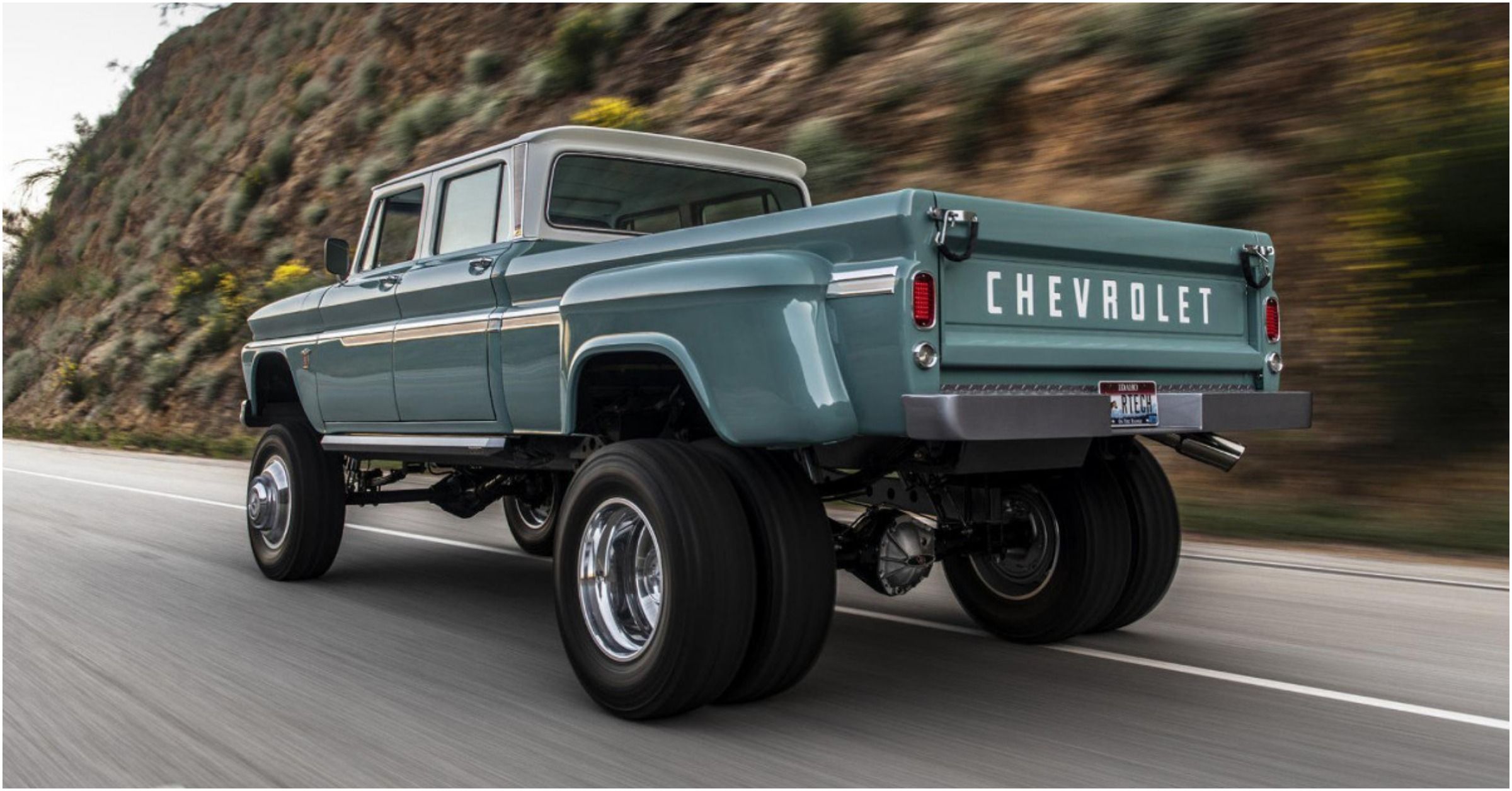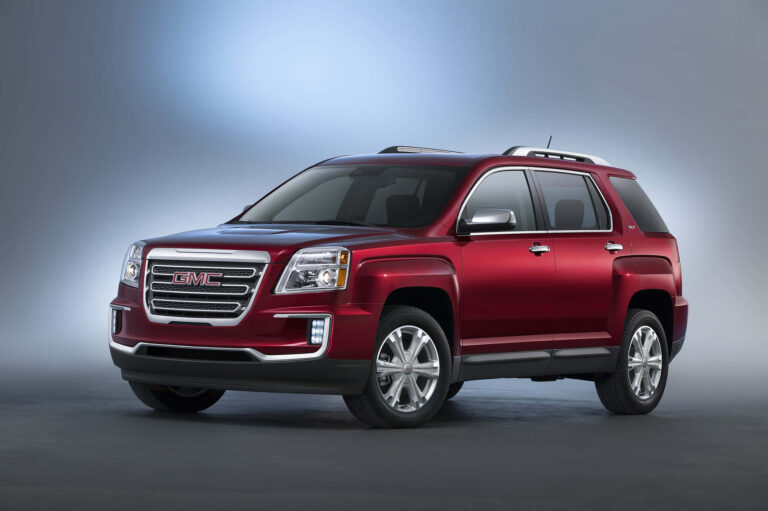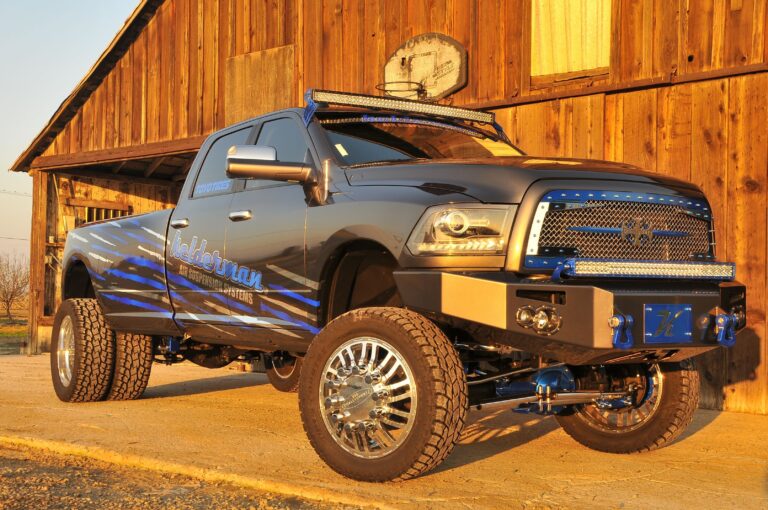Trucks With Lift For Sale: Elevating Your Ride and Your Capabilities
Trucks With Lift For Sale: Elevating Your Ride and Your Capabilities cars.truckstrend.com
The automotive landscape is vast, but few vehicle categories capture the imagination quite like "trucks with lift for sale." Whether you envision conquering rugged off-road trails, making a powerful aesthetic statement, or needing specialized equipment for demanding work, a truck with a lift offers a unique blend of capability, presence, and utility. Far from being a mere aesthetic modification, a well-executed lift transforms a truck’s performance, allowing for larger tires, increased ground clearance, and an improved vantage point. This comprehensive guide will delve into the world of lifted trucks, exploring everything from their various types and benefits to crucial considerations, where to find them, and what to look for when making a purchase.
Understanding "Lifted Trucks": More Than Just Height
Trucks With Lift For Sale: Elevating Your Ride and Your Capabilities
At its core, a "truck with a lift" refers to a vehicle that has had its suspension or body raised to increase its overall height. While the term broadly encompasses everything from recreational off-roaders to heavy-duty commercial vehicles equipped with hydraulic booms or dump beds, in the context of personal vehicle sales, it most commonly refers to trucks modified with suspension lifts or body lifts.
- Suspension Lifts: These are the most common and effective type of lift for improving off-road performance. They involve modifying or replacing components of the truck’s suspension system (shocks, springs, control arms, leaf springs) to raise the frame and body higher off the axles. This increases ground clearance, allowing for larger tires and improving the truck’s ability to articulate over uneven terrain without scraping the undercarriage. Suspension lifts can range from a modest 2 inches to an extreme 10+ inches, with varying levels of complexity and impact on ride quality.
- Body Lifts: Unlike suspension lifts, body lifts do not alter the suspension components or change the truck’s ground clearance at the axles. Instead, they involve installing spacers between the truck’s frame and its body. This effectively raises the body relative to the wheels and frame, primarily to allow for the fitment of larger tires without modifying the suspension geometry. Body lifts are generally less expensive and easier to install but offer no performance benefit for off-roading.
- Leveling Kits: Often considered a "mini-lift," leveling kits are designed to raise the front of a truck by 1-3 inches to eliminate the factory "rake" (where the front sits slightly lower than the rear). This provides a more aggressive stance and allows for slightly larger tires without significantly altering the vehicle’s dynamics.
Beyond personal modifications, the term "trucks with lift" can also refer to commercial vehicles equipped with specialized lifting mechanisms, such as:
- Bucket Trucks (Aerial Lifts): Trucks with an extendable boom and a work platform (bucket) for accessing elevated areas, common for utility work, tree trimming, and sign installation.
- Dump Trucks: Trucks with a hydraulically operated bed that can be raised to dump loose materials like sand, gravel, or debris.
- Crane Trucks: Trucks fitted with a crane for lifting and moving heavy loads on construction sites or for recovery operations.

While this article will primarily focus on the recreational/aesthetic aspect of lifted trucks (suspension/body lifts), it’s important to recognize the broader scope of "trucks with lift" in the market.

The Benefits of Owning a Truck With a Lift
The appeal of a lifted truck extends beyond its imposing appearance. Here are some key advantages:
- Enhanced Off-Road Capability: This is arguably the primary benefit of a suspension lift. Increased ground clearance means less risk of scraping the undercarriage on rocks, stumps, or deep ruts. Improved suspension articulation allows the wheels to maintain contact with uneven terrain, enhancing traction and control.
- Accommodates Larger Tires: Lifts create the necessary wheel well clearance for bigger, more aggressive tires. Larger tires provide a bigger contact patch, crucial for grip in mud, sand, or snow, and often feature deeper treads for superior traction off-road.
- Improved Visibility: Sitting higher in traffic provides a commanding view of the road ahead, potentially enhancing your ability to anticipate obstacles and traffic flow.
- Distinctive Aesthetic Appeal: For many, the rugged, aggressive stance of a lifted truck is a major draw. It conveys power, adventure, and a unique personal statement that stands out from stock vehicles.
- Utility for Specific Applications: While not directly related to suspension lifts, commercial trucks with hydraulic lifts (like bucket trucks or dump trucks) are indispensable tools that dramatically increase productivity and safety for various industries.

Key Considerations When Buying a Lifted Truck
Purchasing a lifted truck, especially a pre-owned one, requires careful consideration. Modifications can significantly impact a vehicle’s performance, safety, and longevity.
- Purpose and Intended Use: Are you seeking a daily driver that looks cool, a dedicated off-road beast, or a versatile workhorse? Your answer will dictate the type and extent of lift you should consider. An extreme lift might be impractical for daily commuting.
- Lift Type and Quality: Not all lifts are created equal. Research the brand of the lift kit used. High-quality kits from reputable manufacturers (e.g., BDS, Fox, ICON, King, Bilstein) are designed to maintain proper suspension geometry, ride comfort, and durability. Cheap kits can lead to poor ride quality, premature wear, and even safety issues.
- Tire and Wheel Compatibility & Gearing: Larger tires look great but add significant rotational mass. This can strain the drivetrain, reduce acceleration, and negatively impact fuel economy. Many lifted trucks with oversized tires require re-gearing the differentials to restore optimal performance and prevent transmission strain. Check if this has been done.
- Drivetrain and Component Stress: Lifting a truck, particularly with a suspension lift, can alter angles of driveshafts, control arms, and steering components. This can lead to increased wear on universal joints, CV joints, ball joints, and tie rods. Inspect these components thoroughly.
- Braking Performance: Larger, heavier tires increase stopping distances. Some heavily lifted trucks might benefit from upgraded braking systems.
- Legality and Insurance: Lift laws vary significantly by state and even municipality. Ensure the truck’s height and modifications comply with local regulations. Additionally, some insurance companies may have specific policies regarding modified vehicles, potentially increasing premiums or even denying coverage if not properly disclosed.
- Ride Quality and Handling: A lifted truck will almost always ride differently than a stock one. Some lifts can lead to a stiffer, bouncier, or less stable ride. Test drive extensively over various road conditions to assess comfort and handling.
- Maintenance and Longevity: Lifted trucks, especially those used for off-roading, may require more frequent maintenance of suspension and drivetrain components. Be prepared for potentially higher running costs.
- Pre-Purchase Inspection: This is paramount for any used vehicle, but especially for a modified one. Have a trusted mechanic (preferably one familiar with lifted vehicles) conduct a thorough inspection to identify any hidden issues, poorly installed components, or signs of abuse.
Where to Find Trucks With Lift For Sale
The market for lifted trucks is robust and diverse. Here are some of the best places to begin your search:
- Specialized Dealerships: Many dealerships, particularly those focused on trucks or custom vehicles, often have a selection of pre-lifted trucks or offer lift kit installation services on new vehicles.
- Online Marketplaces:
- AutoTrader, Cars.com, CarGurus: These major automotive listing sites allow you to filter searches by modifications, including lift kits.
- eBay Motors: A great source for both private sellers and dealerships, often featuring a wide range of custom builds.
- Facebook Marketplace: Increasingly popular for local private sales, you can often find good deals directly from owners.
- Truck & Off-Road Forums/Communities: Online forums dedicated to specific truck brands (e.g., Ford F-150 forums, Tacoma World) or off-roading, often have classified sections where enthusiasts sell their modified vehicles. These can be excellent sources for well-maintained, thoughtfully built trucks.
- Local Classifieds & Auctions: Don’t overlook local options. Sometimes, you can find hidden gems through traditional classifieds or local vehicle auctions, though the latter often requires more expertise in assessing vehicle condition.
- Custom Build Shops: Some custom truck shops or off-road outfitters might sell vehicles they’ve built or taken on trade. These often come with professional installation and known component quality.
Tips for Inspecting and Buying a Lifted Truck
Once you’ve found a promising candidate, follow these tips for a smart purchase:
- Review Documentation: Ask for records of the lift kit installation. Was it done professionally? What brand is the kit? Are there receipts for maintenance or other modifications?
- Examine the Lift Components: Visually inspect the shocks, springs, control arms, and other suspension components. Look for signs of damage, leaks (from shocks), excessive rust, or worn bushings. Ensure all bolts are present and tightened.
- Check for Proper Alignment & Tire Wear: Improper alignment is common after a lift if not done correctly. Uneven or feathered tire wear is a tell-tale sign of alignment issues or worn steering components.
- Inspect the Undercarriage: Look for dents, scrapes, or bent components that indicate heavy off-road use or abuse. Pay attention to the frame for cracks or signs of repair.
- Test Drive Extensively:
- Listen for unusual noises (clunks, squeaks, hums) from the suspension or drivetrain.
- Feel for vibrations at various speeds, especially highway speeds, which can indicate driveline angle issues or unbalanced tires.
- Check steering response. Is it loose or vague? Does it pull to one side?
- Brake firmly to ensure good stopping power.
- Assess Interior & Electrical: Check for any "check engine" lights or other warning indicators. Ensure all electrical components (lights, infotainment, windows) function correctly.
- Get a Professional Pre-Purchase Inspection: This cannot be stressed enough. A third-party mechanic specializing in trucks or 4x4s can identify issues you might miss, saving you significant money and headaches down the road.
Challenges and Solutions
While lifted trucks offer many advantages, they come with potential challenges:
- Challenge: Reduced Ride Comfort and Handling: Some lift kits, especially cheaper ones, can lead to a harsh ride, excessive body roll, or vague steering.
- Solution: Invest in high-quality suspension components (coilovers, adjustable shocks), ensure proper alignment, and consider adding a steering stabilizer.
- Challenge: Increased Fuel Consumption: Larger tires and increased aerodynamic drag inevitably lead to worse fuel economy.
- Solution: While you can’t defy physics, re-gearing can help the engine operate in its optimal power band, mitigating some of the fuel economy loss. Drive conservatively.
- Challenge: Accelerated Wear on Components: Drivetrain and suspension components may experience increased stress and wear.
- Solution: Regular, thorough maintenance is crucial. Use high-quality replacement parts and address issues promptly.
- Challenge: Entry/Exit Difficulty: Taller trucks can be harder to get into and out of, especially for shorter individuals or children.
- Solution: Install high-quality running boards or power-deploying steps.
- Challenge: Parking and Clearance Issues: Taller trucks may not fit into standard parking garages or drive-thrus.
- Solution: Always be aware of your truck’s height. Measure it if you frequently visit places with low clearances.
Estimated Price Range for Trucks With Lift For Sale
Pricing for lifted trucks varies wildly based on make, model, year, mileage, condition, the quality and type of lift, and additional modifications. The following table provides a broad estimate, but always conduct thorough market research for specific models.
| Category | Description | Estimated Price Range (USD) | Key Factors Influencing Price |
|---|---|---|---|
| Used, Mildly Lifted (2-4") | Older models (5-10+ years old), 2-4 inch leveling or body lift, basic all-terrain tires. May have higher mileage. | $15,000 – $35,000 | Make/Model (e.g., Ford F-150, Chevy Silverado 1500, Ram 1500), engine type, mileage, overall condition, quality of lift components, tire condition. |
| Used, Moderately Lifted (4-6") | Mid-range models (3-7 years old), 4-6 inch suspension lift, larger, more aggressive tires, potentially some aftermarket bumpers/lighting. | $35,000 – $65,000 | Make/Model (e.g., Toyota Tacoma, Tundra, Ford Super Duty, GMC Sierra HD), engine (diesel often higher), quality of lift kit (e.g., BDS, Rough Country), additional accessories, maintenance history. |
| Used, Heavily Modified/Off-Road Ready (6"+) | Newer models (1-5 years old), 6-10+ inch performance lift, re-geared, large mud tires, extensive off-road armor, winches, custom work. | $65,000 – $100,000+ | Premium off-road models (e.g., Ford Raptor, Ram TRX, Toyota 4Runner TRD Pro), high-end suspension (e.g., King, ICON), custom fabrication, low mileage, professional build quality. |
| New, Factory Lifted/Special Edition | Brand new trucks with factory-approved or dealer-installed lift packages, often with specific trim levels (e.g., Chevrolet Trail Boss, Ram Rebel, Ford Tremor). | $55,000 – $90,000+ | Specific model trim, engine choice, factory warranty on modifications, dealership-specific packages. |
| Commercial/Utility Trucks with Hydraulic Lifts | (e.g., Bucket trucks, dump trucks, crane trucks with specialized hydraulic lifting mechanisms). | $25,000 (older, basic) – $250,000+ (new, specialized) | Type of hydraulic lift (boom, dump, crane), lifting capacity, reach, vehicle chassis, specialized equipment, condition, maintenance history, industry-specific certifications. This category has extreme variability. |
Disclaimer: These are broad estimates for general guidance. Actual prices can vary dramatically based on geographic location, specific vehicle history (accidents, flood damage), the brand and quality of lift components, the professionalism of the installation, additional aftermarket modifications, and current market demand. Always conduct thorough research, compare multiple listings, and perform a comprehensive pre-purchase inspection.
Frequently Asked Questions (FAQ)
Q: What’s the main difference between a suspension lift and a body lift?
A: A suspension lift raises the truck by modifying its suspension components, increasing ground clearance and allowing for better off-road performance. A body lift uses spacers between the frame and body, raising only the body to clear larger tires, without affecting suspension geometry or ground clearance.
Q: Will lifting my truck void its warranty?
A: It depends. Modifications can void parts of your factory warranty, particularly those related to the suspension, drivetrain, and related components if the dealer can prove the modification caused the failure. Some truck manufacturers offer "lift-friendly" options or work with authorized aftermarket installers whose work may be covered. Always check with your dealer or manufacturer.
Q: Do I need to re-gear my truck after lifting it and adding larger tires?
A: For significant tire size increases (typically 33 inches or larger), re-gearing is highly recommended. It restores the engine’s power band, improves acceleration, reduces strain on the transmission, and helps mitigate the negative impact on fuel economy.
Q: How does lifting affect fuel economy?
A: Lifting a truck and adding larger, heavier tires will almost always decrease fuel economy. The larger tires create more rolling resistance and rotational mass, while the increased height and aggressive stance worsen aerodynamics.
Q: Are lifted trucks safe to drive?
A: When professionally installed with quality components, a lifted truck can be safe. However, poorly installed lifts or extreme lifts can compromise handling, braking, and stability. Always prioritize safety and professional installation.
Q: What’s the legal height limit for a lifted truck?
A: Legal height limits vary significantly by state and even local municipality. Some states have specific regulations regarding bumper height, headlight height, and overall vehicle height. Always research your local laws before purchasing or modifying a lifted truck.
Q: Can I lift my 2WD truck?
A: Yes, you can lift a 2WD truck. The principles of suspension and body lifts apply similarly. However, a 2WD lifted truck will not offer the same off-road capability as a 4WD truck due to the lack of power to the front wheels.
Q: What additional maintenance is required for a lifted truck?
A: Lifted trucks may require more frequent inspection and maintenance of suspension components (bushings, ball joints, tie rods), driveshafts, universal joints, and CV axles due to altered angles and increased stress. Regular alignment checks are also crucial.
Conclusion
A truck with a lift for sale represents more than just a vehicle; it’s a statement, a tool, and a gateway to enhanced capabilities. Whether you’re drawn to the commanding presence of a lifted pickup, the rugged utility for off-road adventures, or the indispensable functionality of a commercial lift truck, the market offers a wide array of options.
However, the decision to purchase a lifted truck should be an informed one. By understanding the different types of lifts, their benefits, and the critical considerations involved, you can navigate the market with confidence. Prioritize quality, safety, and a thorough inspection, and you’ll be well on your way to owning a vehicle that truly elevates your ride and your capabilities. With the right research and a smart approach, your next truck with a lift will be a valuable asset for years to come.






